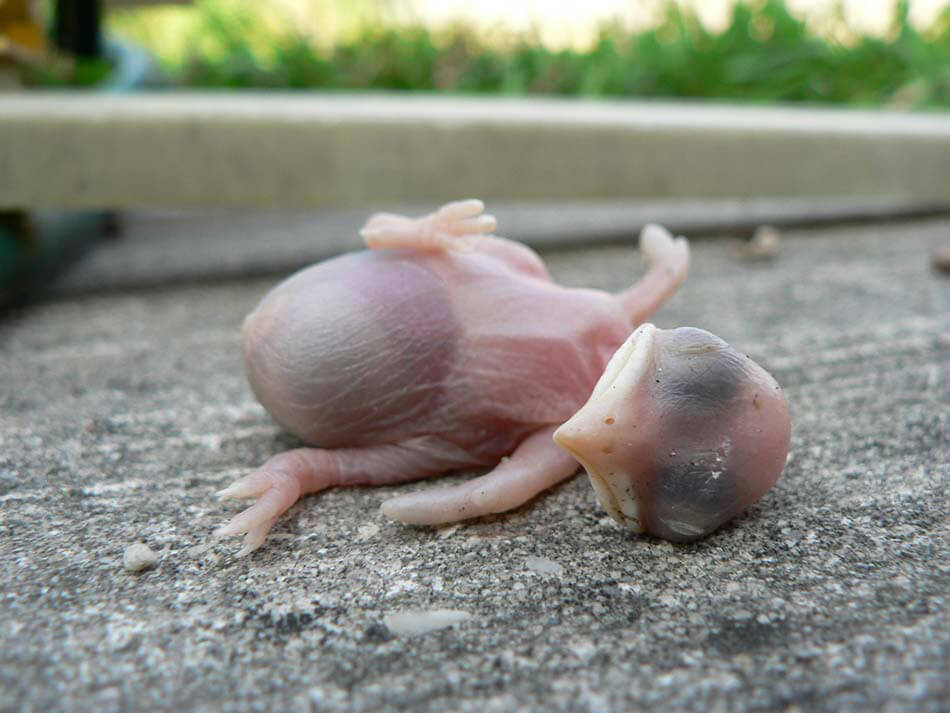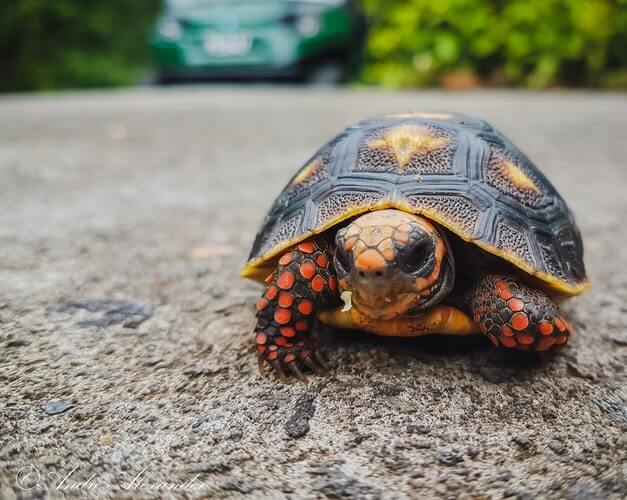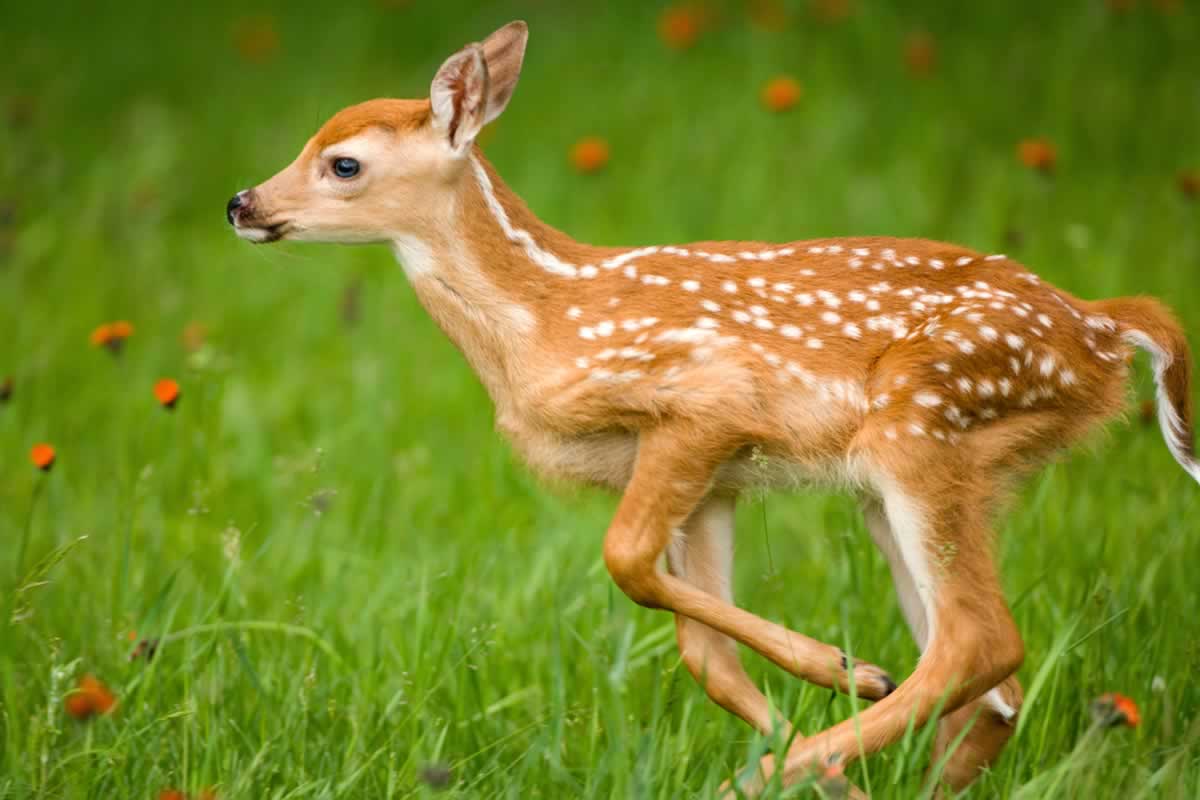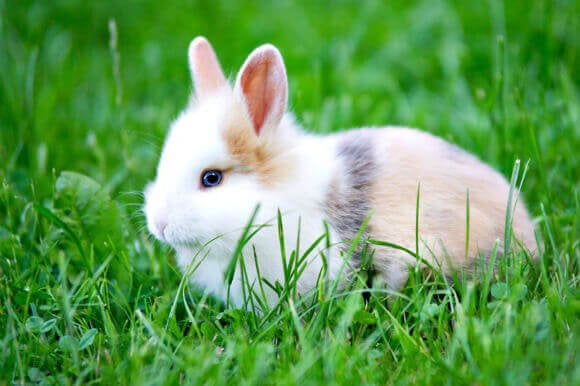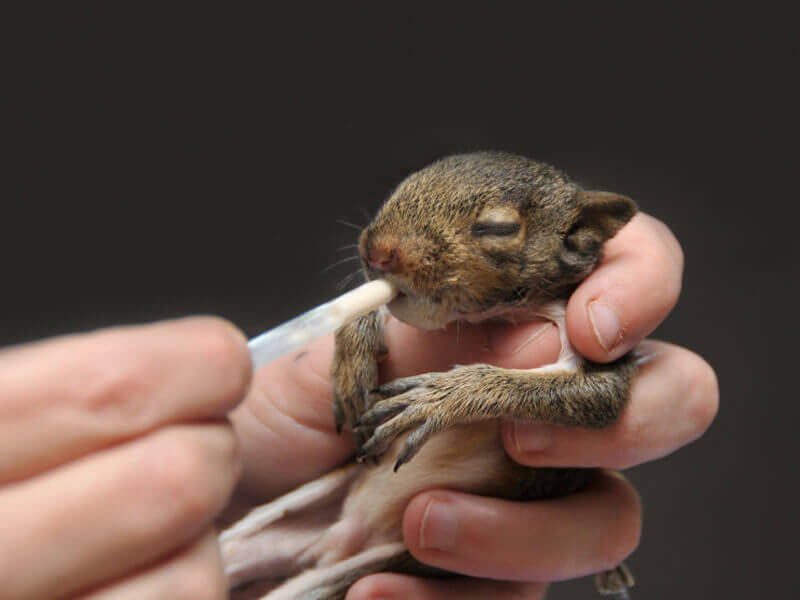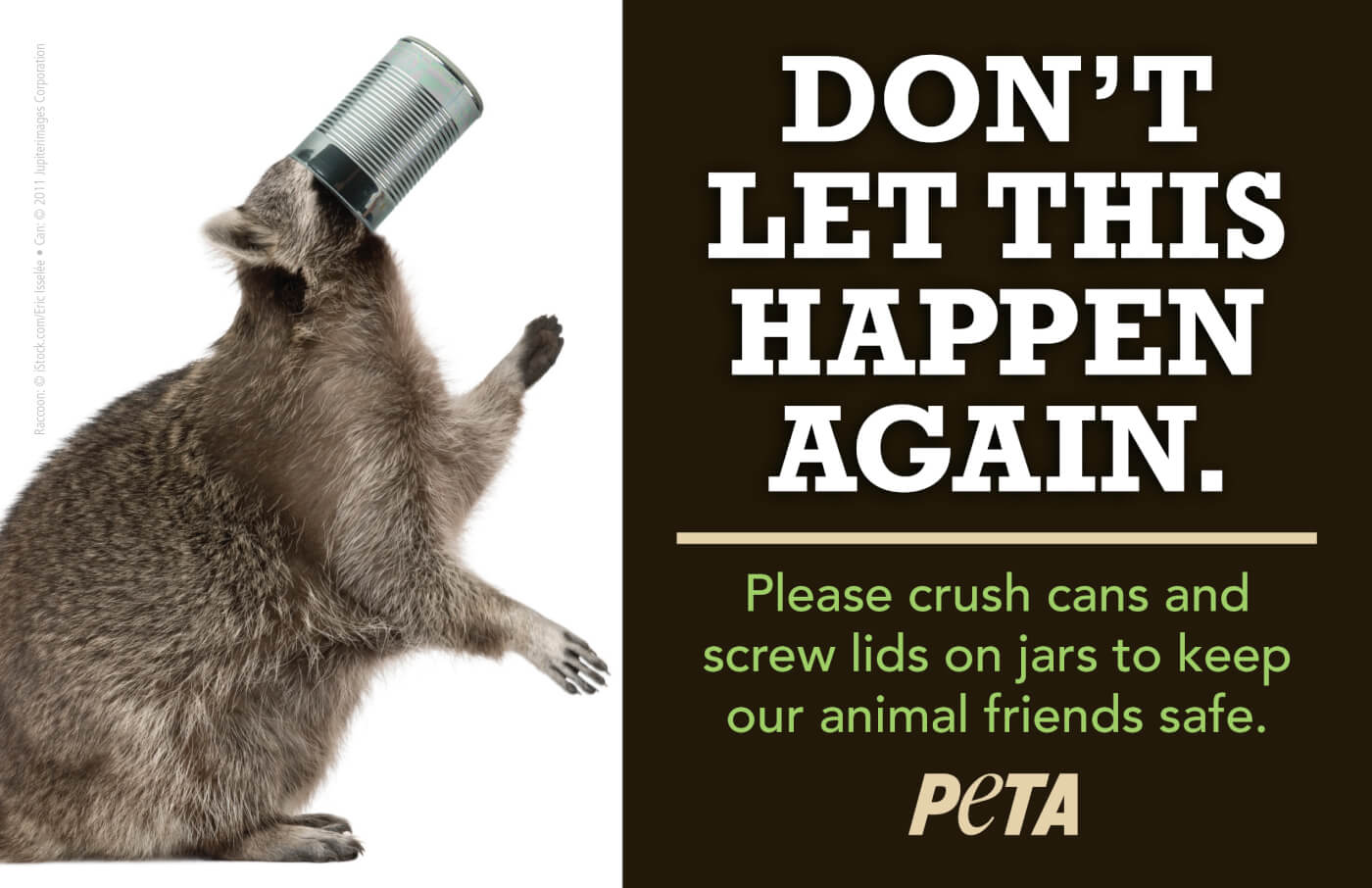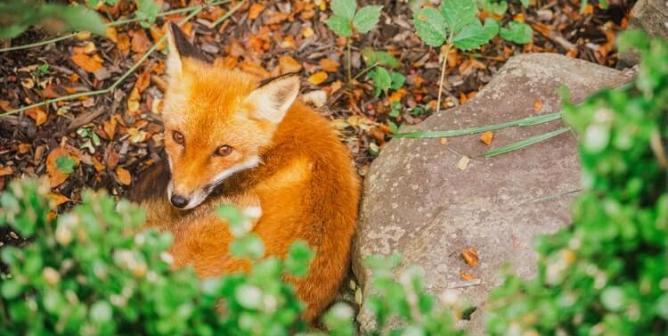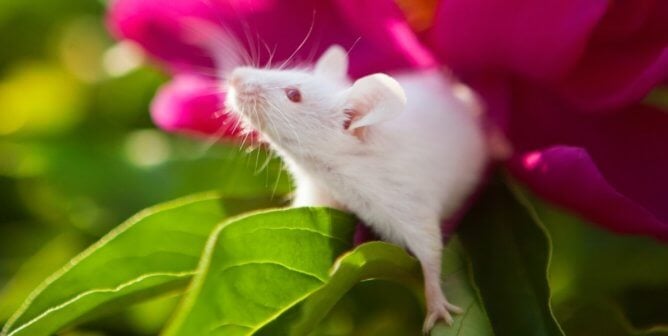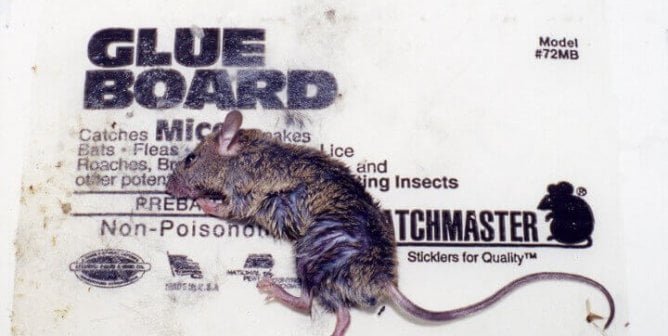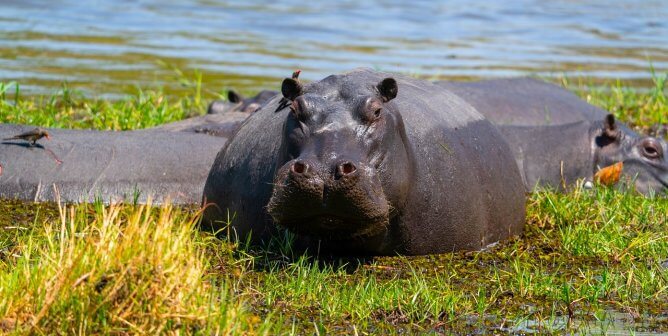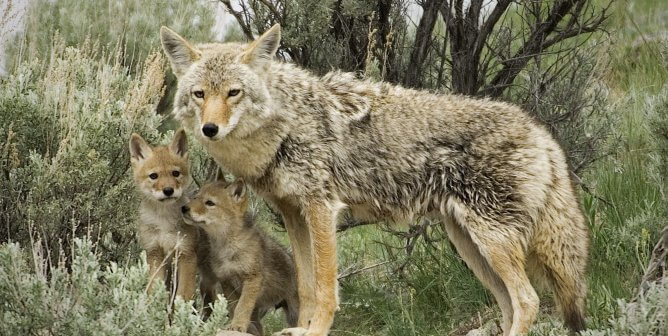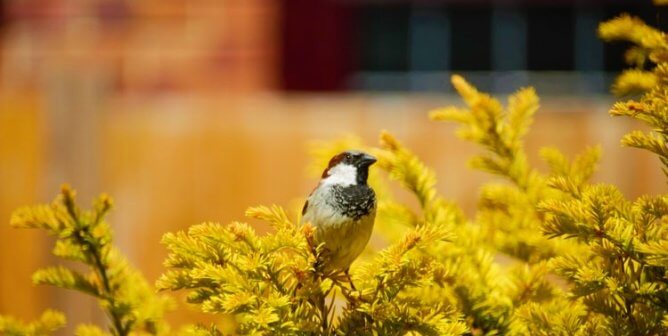Wildlife Emergencies: How to Help and When Not to Interfere
Wildlife rescue can get complicated quickly. When you see an animal experiencing an emergency, you may be afraid to help or not know what to do. Although you might feel overwhelmed, never pass by an animal in need of assistance, thinking, “Someone else will help”—they probably won’t. Be prepared, and do your best to help immediately.
Whom to Call When You Find an Injured Bird, Deer, or Other Wild Animal
When rescuing wildlife, you should first call a licensed wildlife rehabilitator in your area. If they can’t be reached, call local veterinary clinics and humane societies. If you’re unable to get assistance from a rehabilitator, a veterinarian, or law enforcement, please call PETA at 757-622-7382—at any time, day or night—and follow the prompts.
Have an Animal Emergency and Wildlife Rescue Kit on Hand
A small window of opportunity could be the difference between life and death for animals in an emergency. Assemble an emergency animal rescue kit so you’ll be ready when an animal needs you—or get a preassembled kit from the PETA Shop.
Rescuing Adult Animals
Adult wild animals can be dangerous to humans, so if you can, contact a humane society or wildlife rehabilitator to obtain specific instructions before attempting a rescue.
If a rescue is necessary and the animal is completely immobile and unconscious, put on a pair of gloves, drape a blanket or sheet over the animal’s head and body, and lift them into a newspaper-lined box or crate. Cover the box or crate with a towel or blanket and place it in a dark, quiet place. Don’t offer the animal food or water, and don’t attempt to care for the animal yourself without instructions from a professional.
Quick Habits That Can Help Prevent Wildlife Accidents
- Before mowing grass or letting dogs outside, check for cottontail rabbit nests.
- Before throwing food containers out, rinse them, put lids back on jars, crush cans, and cut apart plastic six-pack rings. This will prevent animals from getting stuck in your garbage.
- If you find litter that could be hazardous to animals, clean it up.
- Cover garbage and recycling bins. If you need to secure the lids more tightly, try a bungee cord.
- Keep cats indoors. Cats are in constant danger outside, spread pathogens, and account for over 14 billion mammal and bird deaths each year, which destroys ecosystems.
When Less Action Is the Best Action
Remember: Animals in their natural environment know their needs better than you do. If you can spare an animal the stress of being handled and transported away from their natural surroundings, you should.
Don’t separate animals from their environment unless they’re obviously injured, caught by a predator, trembling, lethargic, or dependent on a parent who was killed nearby. If an animal can fly or run away, they’re usually fine—the most they need is to be watched from a safe distance for a few hours or days to ensure that their condition doesn’t deteriorate.
Rescuing Baby Birds
Despite what you may have heard, adult birds won’t reject a baby who’s been touched by humans.
However, people often mistakenly “rescue” baby birds who should be left alone. If you see a fallen baby bird with few or no feathers, place them back in the nest. If you can’t find the nest, make one out of a basket or paper cup with small holes in the bottom so water can drain out if it rains, hang it in a sheltered spot close by, and watch—from a distance—for the parents to return.
Fledglings—young, mostly feathered birds—may flap on the ground as they learn to fly. Their parents are usually nearby. If fledglings are in immediate danger, move them to a nearby tree or shrub.
If the bird appears injured or ill or if the parents don’t return, contact a wildlife rehabilitator.
Getting Turtles Across the Road
If you spot a turtle ready to cross a road, help them across immediately. Pick up small turtles and gently nudge large or snapping turtles into a box or onto a flat surface. Take them in the direction that they were headed. Don’t ever turn them around—they know where they want to go and will turn back into a dangerous area if they’re rerouted.
Helping Injured Turtles
A seemingly dead turtle is often still alive. Because of their slow metabolism, injured turtles can suffer for days—or even weeks—before finally dying. If you find an injured turtle, pinch a back toe or touch the corner of an eye and check for a reaction. Rush the turtle to the nearest veterinarian or animal shelter if you see any signs of life.
What to Do With Baby Deer
Fawns—baby deer—can easily be identified by their spots. They spend most of their time alone—quiet and almost motionless—in open fields, waiting for their mothers to return. Fawns are often mistaken for orphans because mother deer only nurse and attend to their young a few times per day. However, if you find a fawn who is wandering alone, calling, or lying on one side in a field, they may be orphaned. If you think you’ve found an orphaned fawn, contact a wildlife rehabilitator immediately.
Deer have a highly developed sense of smell, so never handle fawns unless absolutely necessary. If you do handle a fawn and then find that they need to be returned to their mother, wipe the animal clean with a towel before returning them. Watch from a safe distance to be sure the baby isn’t abandoned.
How to Rescue Baby Rabbits
Young cottontail rabbits should only be handled as a last resort. Baby rabbits have a high death rate when hand-raised, due in large part to the stress of being handled by humans. When baby rabbits are about 5 inches long, they’re completely on their own and away from their mothers. These rabbits don’t need to be taken in unless they’re injured. If you can’t catch a rabbit without a chase, they don’t need to be rescued.
If you find a rabbit nest that has been disturbed, place the baby rabbits back into it and leave them there unless they’re injured or you’re certain that the mother has been killed. Don’t assume a mother is dead simply because you haven’t seen her return to the nest. Female cottontails usually come to feed their young only twice a day—at dawn and dusk—because this decreases the chance of alerting predators to the nest’s location.
If you’re not sure whether the mother has come back to the nest, place a length of twine over it. If the string has been moved by the following morning, the mother has returned.
If baby rabbits are less than 5 inches long and cool to the touch and their mother hasn’t returned to their nest within one day, cover their heads with a dishtowel and quickly place them inside a warm, dark, newspaper-lined box. Put the box in a quiet place. Don’t offer them food or water, and don’t attempt to care for them yourself without instructions from a wildlife rehabilitator.
Helping Baby Squirrels
Young squirrels are often found after their nest has been blown down from a tree. At this point, the mother will be looking for her young. To reunite them, place the babies in a box at the base of the tree. If she feels safe, the mother will usually retrieve her young and carry them to a more secure location.
Resist the temptation to check on the baby squirrels frequently—and keep dogs, cats, and children away. It may be necessary to keep young squirrels indoors overnight and then try again to reunite them with their mother the next day.
If a baby squirrel is injured, weak, or shaking, cover their head with a dishtowel and use gloves to place them inside a warm, safe, newspaper-lined box before calling a rehabilitator.
Spread the Word
Encourage your neighbors to protect local wild animals with this yard sign!

